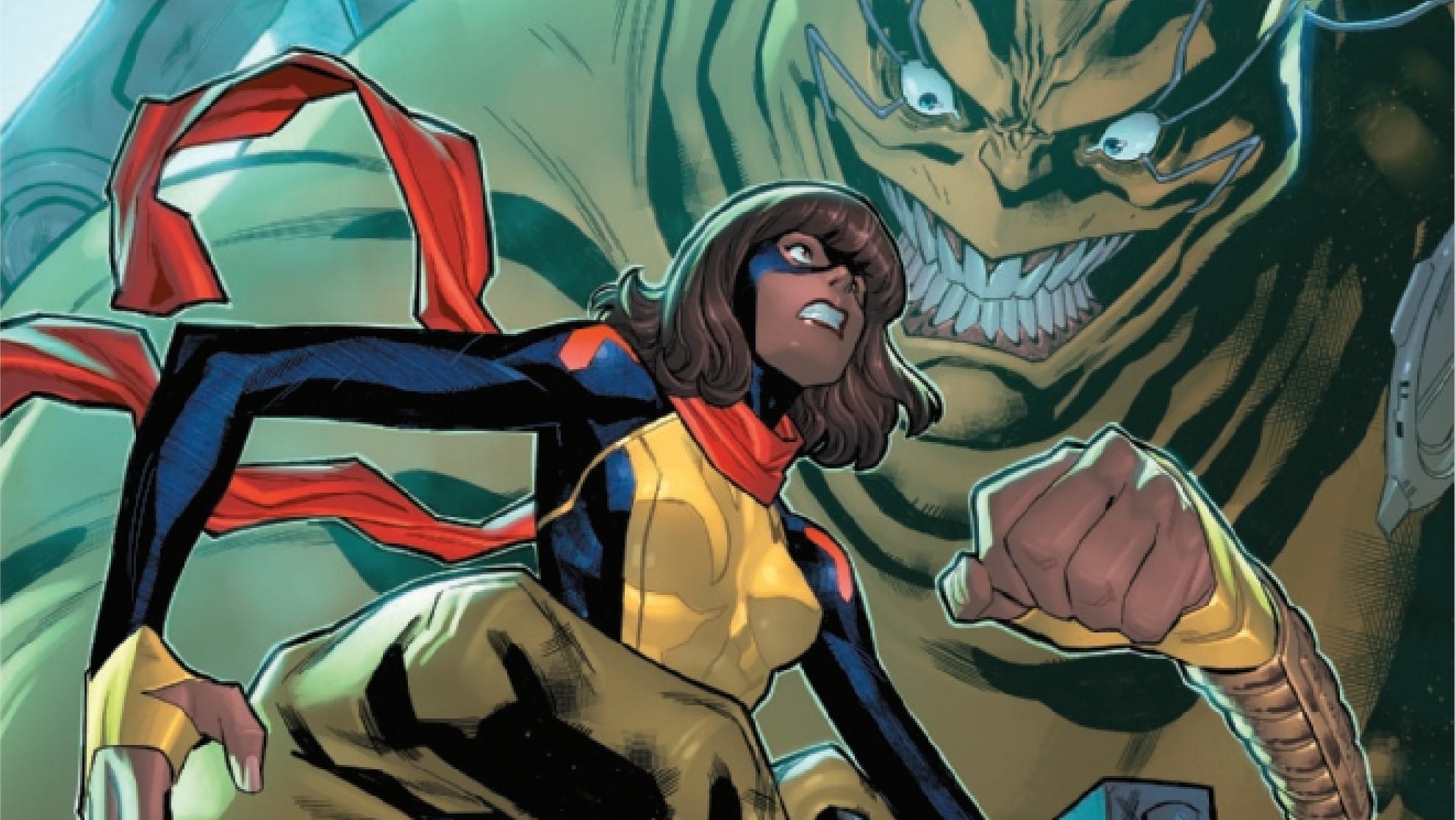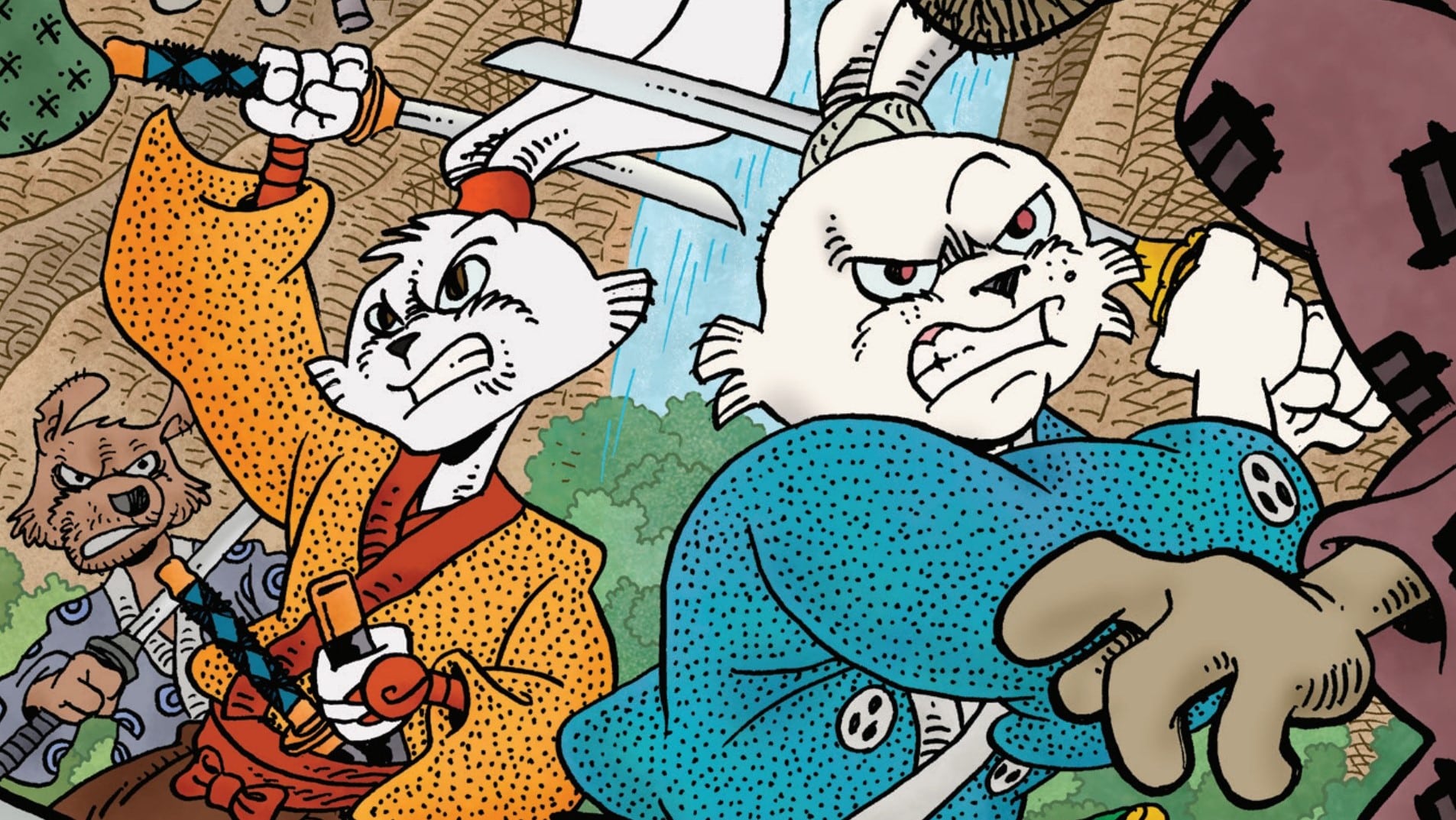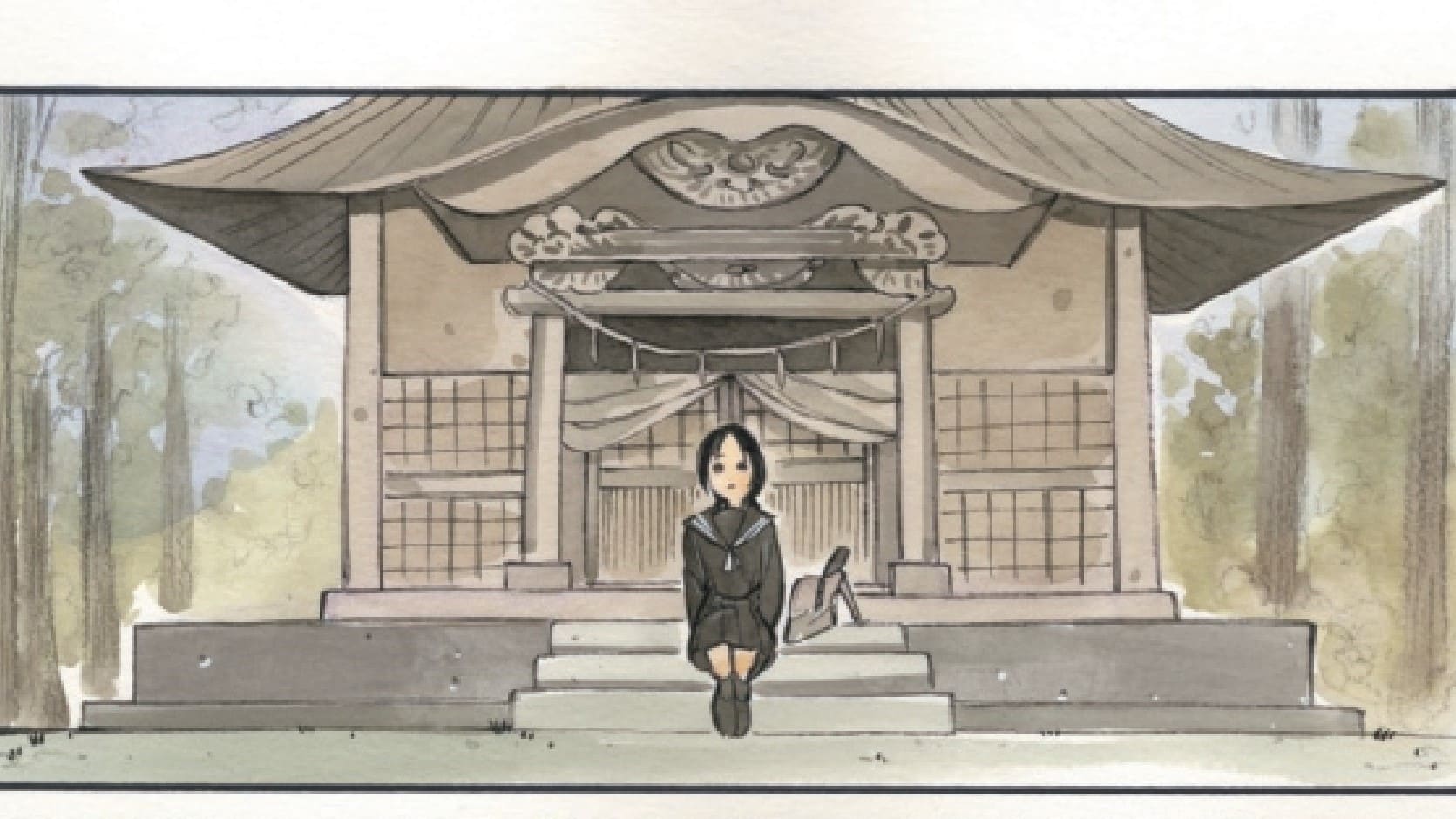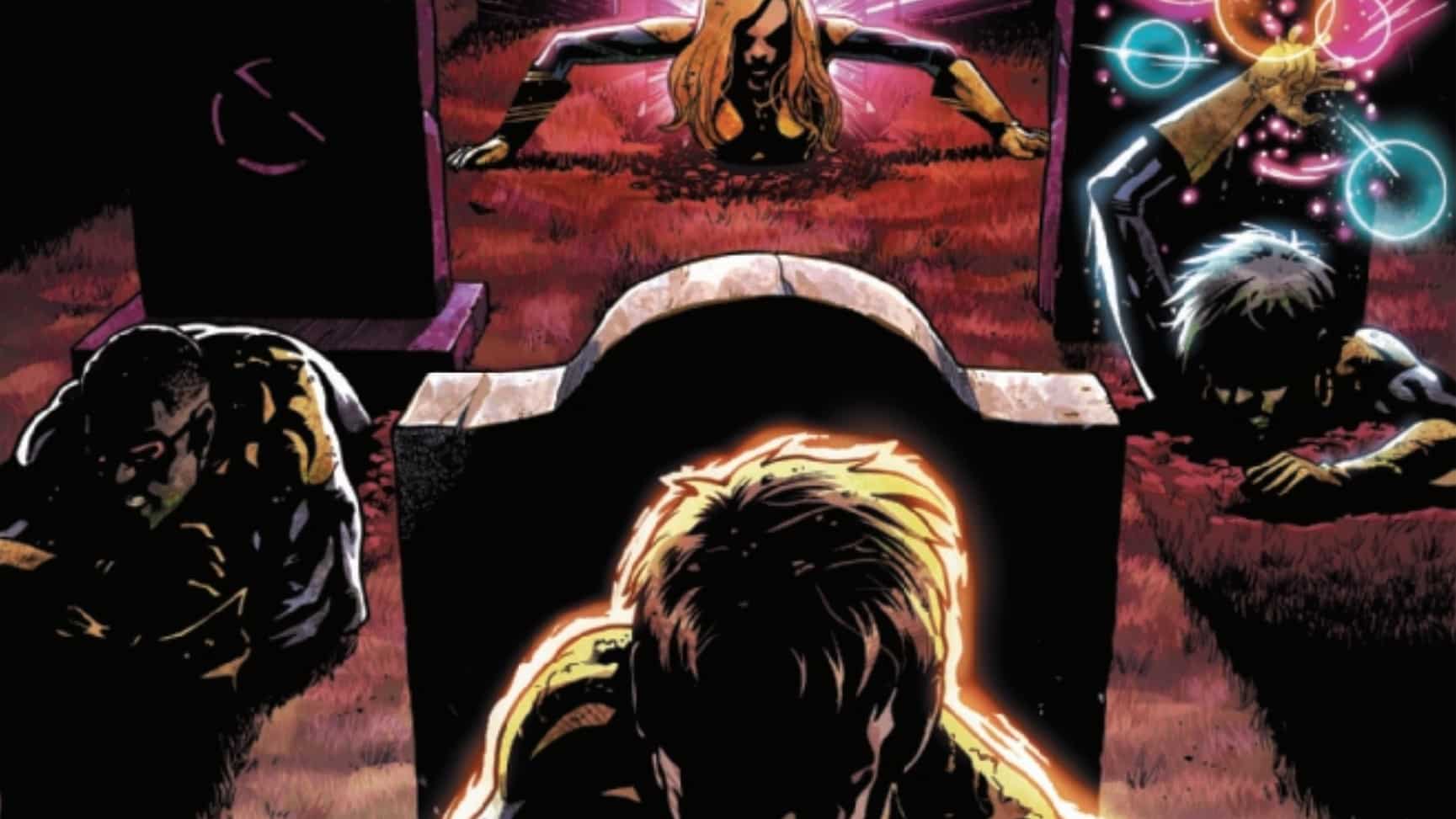Released in print this week, after debuting digitally, The Next Batman: Second Son #1 begins the story of how Jace Fox, the forgotten son of Lucius Fox, becomes the Batman of “Future State” in a story written by John Ridley, drawn by Tony Akins, inked by Mark Morales, colored by Rex Lokus and lettered by Deron Bennett.
OK, hear me out.
It’s 1999, you’re 7 years old, you’re one of maybe five Black kids in your school and dammit, you just want to be Batman. Of course you do – the cartoon is going strong, there’s toys in every aisle, and no matter what the grownups all seem to think whenever the topic comes up, you know that Batman & Robin is the absolute pinnacle of cinematic achievement.
Trouble is, Batman ain’t Black.
Your classmates don’t really have the words to explain why that’s an issue when you’re all playing superheroes at recess, in much the same way that you don’t yet have the words to say “fuck them kids.” But even though you don’t have the words, you have the spirit, so you grab your best friend, who’s getting similar pushback because Superman isn’t Vietnamese, and you start your own game, because you’ve heard all your life that you could grow up to be anything, and that had to be doubly true for superheroes. Eventually, of course, both groups blend back together, but the fact that it happened, the fact that it keeps happening, sticks with you.
Got all that? Cool, we’ll get back to it.
So, now, it’s 2020, you’re 28, the world seems to be burning down around you a little more every day, and you don’t want to be Batman anymore, you just want to live.
There’s a common refrain (albeit one that takes many forms) among every minority group, somewhere between a tongue in cheek joke and a desperate prayer: “Let me be mediocre.” It’s a nice dream. But, as you watch the news, as you see your brothers and sisters murdered in the streets and in their homes, as you see people come out of the woodwork to scrutinize their entire lives for the slightest hint that “they were no angel,” that they weren’t exceptional enough to be above reproach, you know that we’re not there yet. Being anything other than flawless is a nice dream, yeah, but you can’t shake the feeling that it’s one for future generations. Until then, you’ve gotta keep working twice as hard, and hoping that’s enough.
It’s 2021, and by all accounts, Jace Fox is living both of your dreams.

Six issues in, and John Ridley’s The Next Batman: Second Son has yet to grab a hold of me. Worse, I don’t think it wants to. Ridley’s one of my favorite DC creators at the moment, and his The Other History of the DC Universe is easily one of the strongest comics I’ve read in my life. He’s shown in each issue that he can slide between multiple distinct voices, while weaving the harsh realities of intersectional social issues into the bombastic tapestry of an established superhero universe. There’s not an issue of that book that doesn’t take risks and leave me thinking about it days, weeks, after putting the book down. When I heard that he’d be the one bringing Jace into the present day, to set him on the path to becoming the Batman of the Future State, the first Black Batman to headline a book, I was thrilled. There was a real opportunity to make a Black Batman that was taken seriously, a book so damn good that even the most reactionary of readers would have to begrudgingly admit that there was some real meat on that bone.
So now that The Next Batman: Second Son is here, with six digital issues out, and a physical collected edition released this week, the fact that it’s just there feels like a victory lap that hasn’t been earned. It is by no means a bad book – even in the context of the mainstream DC Universe, Ridley’s voice manages to shine through. As a result of its focus on the Fox family, which has recently ended up in possession of the vast majority of Bruce Wayne’s former fortune, there’s a clear focus on the intersection between race and class, which makes Jace’s position an intriguing one. Beyond simply being forgotten by continuity since 1979, he’s been estranged from his family, due to heavily alluded to but never elaborated on misdeeds in his past, and he’s as unprepared to be folded back into the family as most of the family is to take him back. The book’s best scenes are largely uncomfortable, and do a great job of capturing the feeling of being in a family that doesn’t know how to work. The Fox clan’s difficulty in remembering that Jace isn’t going by “Tim” anymore rings true, in ways that are downright painful. It’s never easy when your family struggles to accept who you are and how you’ve grown, and while it’s clear that most of them aren’t doing it out of malice, the fact that it simply isn’t important to them goes a long way toward showing that their conflict won’t be easily swept under the rug.
The character work isn’t quite enough to make up for the plot’s slow pace and by-the-numbers action scenes, though. While six issues of a weekly, digital first series map roughly to three traditional issues, a lot of time has been spent rehashing the same conversations. If the title is only halfway through the equivalent of a traditional six issue trade, I’m not sure it has the time to waste – and at this point it’s focused so heavily on Luke Fox’s Batwing that I don’t see a clear path in this arc for Jace to don the cape and cowl. Neither brother is particularly compelling when it comes to action sequences so far, and while I’m typically all for a little more conversation and a little less action, it’s a risky move to make when it comes to introducing a new Batman. So far, it hasn’t paid off.
The artwork is largely enjoyable, with particularly impressive work by Rex Lokus on colors and Deron Bennett on lettering. That said, and this is worrying, the art loses a lot of its appeal whenever Batwing is on panel. While that could easily be down to the costume’s relatively busy design, it’s the only instance so far of a full-blown costume; I’m hoping it’s not a sign of things to come when Jace finally suits up.
Again, the book is genuinely fine – we’ve all read Batman stories that are significantly better, and significantly worse. But when you’re introducing a minority legacy for one of the biggest names in comics, “middle of the line” ends up being nowhere near good enough. Like the Fox family points out themselves, we have to work twice as hard to get half as far. This book needed to be a home run, and instead, it merely exists.
I’m excited for the day when we can afford to have a Batman that’s both Black and mediocre. Right now, we’re just not there.

Lex Smith
Lex Smith is probably tired right now. They're definitely trying not to think about everything they have to write! When they're not staring at a blank Word document, odds are they're tweeting, playing Pokémon or wondering how they ended up with such a smart-ass kid.





